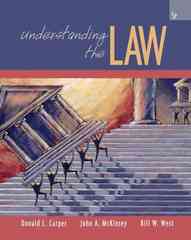Question
Economic MCQ's Just tell answer for these question in options these are MCQ's 1. The marginal propensity to consume is: A)the change in consumption divided
Economic MCQ's
Just tell answer for these question in options these are MCQ's
1. The marginal propensity to consume is:
A)the change in consumption divided by the change in income.
B)consumption divided by income.
C)the change in consumption divided by the change in saving.
D)The change in saving divided by the change in income.
2. The marginal propensity to save is 0.15, the marginal propensity to consume:
(A) is 1.15. (B) is 0.85. (C) is 0.15. (D) cannot be determined by the given information.
3. If Jack received a $1,000 bonus and his marginal propensity to save is 0.15, his consumption
rises by______ and his saving rises by_______.
(A) $150; $500(B) $850; $150(C) $150; $850(D) $1,000; $150
4. If you save $20 when you experience a $200 rise in your income:
(A) your marginal propensity to save is 0.2. (B) your marginal propensity to consume is 0.9.
(C) your marginal propensity to consume is 0.1.
(D) your marginal propensity to consume is 0.8.
5. If consumption is $25,000 when income is $26,000, and consumption increases to $25,900 when income increases to $28,000, the marginal propensity to consume is:
(A) 0.59. (B) 0.65. (C) 0.55. (D) 0.45.
6. Suppose consumption is $10,000 when income is $9,000 and the marginal propensity to save equals 0.1. When income increases to $9,500, consumption will be:
(A) $8,500. (B) $10,450. (C) $10,500. (D) $10,050.
7. If the consumption function is C=80 + 0.6Y, the marginal propensity to save equals:
(A) 0.6.(B) 0.4.(C) 0.5.(D) -0.4.
8. If C= 500 + 0.5Y and I= 400, then equilibrium level of income is:
(A) 900. (B) 1,800.(C) 2,500.(D) 4,000.
__________________________
C= 2000 + 0.5(Y-T)
T= 200
G= 400
I= 500______________
9. Refer to Table 11.1. The equilibrium level of income is:
(A) 4,800.(B) 5,800. (C) 4,600.(D) 5,600.
10. Refer to Table 11.1. If government spending increases by $100, equilibrium output increases by:
(A) $100. (B) $200. (C) $400.(D) $800.
11. If the marginal propensity to consume is 0.5, the tax multiplier is:
(A) -2.5.(B) -2(C) -1(D) -1.666
12. If the marginal propensity to save is 0.3, the tax multiplier is:
(A) -2.5. (B) -1.67. (C) -1.5. (D) -2.33.
13. Taxes are reduced by $50 billion and income increases by $1,000 billion. The value of the
tax multiplier is:
(A) -4.(B) -20.(C) -10.(D) -5.
14. If the tax multiplier is -6 and taxes are reduced by $100 billion, output:
(A) falls by $100 billion. (B) falls by $600 billion. (C) increases by $600 billion.
(D) increases by $100 billion.
Step by Step Solution
There are 3 Steps involved in it
Step: 1

Get Instant Access to Expert-Tailored Solutions
See step-by-step solutions with expert insights and AI powered tools for academic success
Step: 2

Step: 3

Ace Your Homework with AI
Get the answers you need in no time with our AI-driven, step-by-step assistance
Get Started


